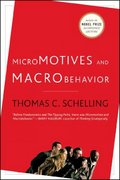4 The data set BWGHT contains data on births to women in the United States. Two variables of interest are the dependent variable, infant birth weight in ounces (bwght), and an explanatory variable, average number of cigarettes the mother smoked per day during pregnancy (cigs). The following simple regres- sion was estimated using data on n = 1,388 births: bwght = 119.77 - 0.514 cigs (i) What is the predicted birth weight when cigs = 0? What about when cigs = 20 (one pack per day)? Comment on the difference. (ii) Does this simple regression necessarily capture a causal relationship between the child's birth weight and the mother's smoking habits? Explain.CHAPTER 2 The Simple Regression Model 59 (iii) To predict a birth weight of 125 ounces, what would cigs have to be? Comment. (iv) The proportion of women in the sample who do not smoke while pregnant is about .85. Does this help reconcile your finding from part (iii)?11 Suppose you are interested in estimating the effect of hours spent in an SAT preparation course (hours) on total SAT score (sot). The population is all college-bound high school seniors for a par- ticular year. (i) Suppose you are given a grant to run a controlled experiment. Explain how you would structure the experiment in order to estimate the causal effect of hours on sot. (ii) Consider the more realistic case where students choose how much time to spend in a prepara- tion course, and you can only randomly sample sat and hours from the population. Write the population model as so! = 30 + lhours + u where, as usual in a model with an intercept, we can assume E(u) = 0. List at least two factors contained in u. Are these likely to have positive or negative correlation with hours? (iii) In the equation from part (ii), what should be the sign of B] if the preparation course is effective? (iv) In the equation from part (ii), what is the interpretation of 30'? GHAPTEB 2 The Simple Regression Model 63 C4 Use the data in WAGE2 to estimate a simple regression explaining monthly salary (wage) in terms of IQ score (IQ). (i) Find the average salary and average [Q in the sample. What is the sample standard deviation ofIQ? (IQ scores are standardized so that the average in the population is 100 with a standard deviation equai to 15.) (ii) Estimate a simpIe regression model where a onepoint increase in IQ changes wage by a con stant dollar amount. Use this model to nd the predicted increase in wage for an increase in IQ of 15 points. Does [Q explain most of the variation in wage? (iii) Now, estimate a model where each onepoint increase in IQ has the same percentage effect on wage. If IQ increases by 15 points, what is the approximate percentage increase in predicted wage? [:5 For the population of rms in the chemical industry. let rd denote annual expenditures on research and development. and let sales denote annual sales [both are in millions of dollars). 0) (ii) Write down a model (not an estimated equation] that implies a constant elasticity between rd and sales. Which parameter is the elasticity? Now, estimate the modei using the data in RDCPIEM. Write out the estimated equation in the usual form. What is the estimated elasticity of rd with respect to sales? Explain in words what this elasticity means. C6 Use the data set in WAGE2 for this problem. As usual, be sure all of the following regressions contain an intercept. (i) Run a simple regression of IQ on educ to obtain the slope coefficient, say, 81. (ii) Run the simple regression of log(wage) on educ and obtain the slope coefficient, B1. (iii) Run the multiple regression of log(wage) on educ and IQ, and obtain the slope coefficients, B, and B2, respectively. (iv) Verify that B, = B, + 3281.6. Use the WAGE2 data again. (a) Regress In(wage) on educ and IQ. Report and interpret both the coefficient on educ and the coefficient on IQ. (b) Now do the following: 1. Regress educ on IQ and save the residuals from this regression (hint: use the 'predict' command after the regression with the appropriate option after the comma, just like we did in class). Let's label the residuals educ". [Remember: if you estimate the model educ; = on + 1IQ; + v; and obtain fitted values (or model predictions) as educ; = do + 1 IQ;, then the estimated residual is educ" = educ; - educ; = educ; - 60 - 6, IQi.] 2. Regress In(wage) on educ Report and interpret the coefficient on educ How does it compare to the coefficient on educ from part (a)? Given the relationship between the coefficient here and that in part (a), what can you say about how to interpret the estimated coefficients in a multiple regression? (Hint: we talked about the 'partialling out' interpretation in class. There is also a great discussion in Chapter 3.) (c) Now regress In(wage) on IQ only and save the residuals from this regression. Let's call these residuals In(wage)". Now regress In(wage)" on educ (from above) and report the coefficient. How does it compare to the estimated coefficient from part (a) and estimated coefficient from part (c)? In(wage)" is the part of In(wage) that is independent of IQ and educ" is the part of educ that is independent of IQ. Given this knowledge, add to your explanation in part (c) about how to interpret estimated coefficients in a multiple regression












